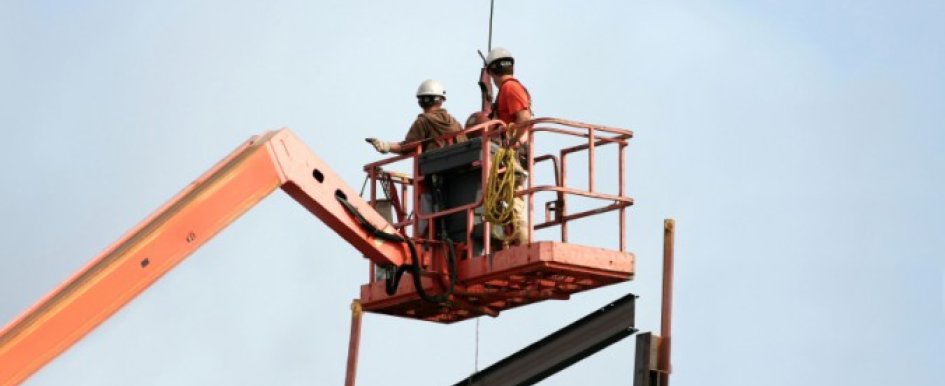
Staying safe and following safety protocols on the jobsite can often be sacrificed because of short timelines or the simple need to get a job done. Time restraints and pressures can lead to unsafe practices but it’s up to everyone to watch out for the safety of themselves and one another. It takes conscious effort to make changes to a standard routine.
Even with national safety standards and guidelines from Occupational Safety & Health Administration (OSHA) and American National Standards Institute (ANSI), construction crews may often take shortcuts and wind up getting injured. According to an OSHA report, more than one person dies every business day from construction falls in the U.S. (1.16 people to be exact; more than 300 people per year). Falls are also the number one cause of fatalities in the construction industry. What may come as a surprise is that more than half of all falls occurred at a height of 10 feet or less. And it takes just 1 second to fall 16 feet.
In construction work, fall protection is the leading cause of fatalities and the most frequently cited standard by OSHA. Regulations require fall protection when working at heights above 6 feet. For professional contractors, builders and safety professionals who depend on safe access at any height, it is important to consider some of the different scenarios that require fall protection equipment.
Required Fall Protection Scenarios
- Unprotected edges—Any side or edge (except at entrances to points of access) of a walking work surface where there is no wall or guardrail system of at least 39 inches
- Leading edges—The edge of a floor, roof, or deck, which changes location as additional floors, roofs, decking or sections are placed, formed or constructed
- Hoist areas—Where a worker is raised or lifted by mechanical means
- Holes—Including skylight roof openings
- Working with dangerous equipment like machinery in elevated areas
- Areas, including ramps, runways, evacuations, steep roofs and low sloped roofs
Fall protection has many components that need to be checked and properly secured in order for the protection to be fully effective and working at its safest capacity.
Components of a complete fall protection system can include a harness, lanyard, anchor, connecting device, retractable or vertical lifeline and accessories. Also, it’s important to note that the educational component—how all of these various pieces fit properly and work together to protect lives on the jobsite—plays an important role.
The first step in ensuring safety at heights on the jobsite is the proper fall protection equipment installation or fitting. Read the tips below for proper usage of each fall protection system component.
Recommendations for Fall Protection Installation
Full Body Harness Recommendations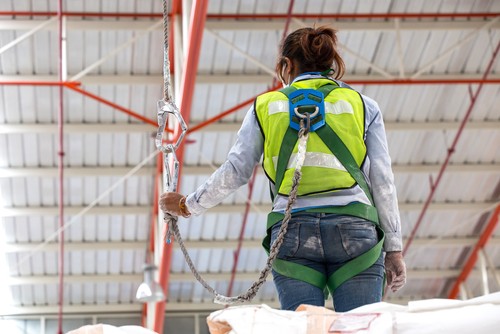
- Centered chest strap
- No loose straps and all straps are properly routed
- Shoulder straps and sub-pelvic straps correctly placed
- Correct dorsal D-ring is placed correctly; The dorsal D-ring is the main attachment point for lanyards, vertical lifelines and retractables.
Connecting Device Recommendations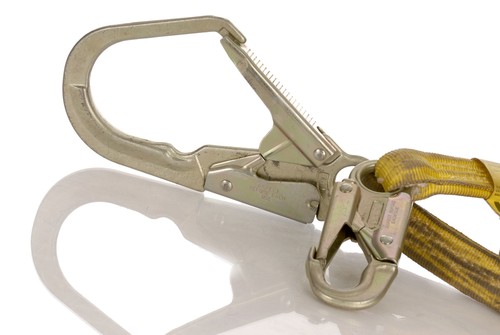
- Must be self-locking and self-closing
- Require two separate actions to open
- 5000-pound minimum breaking strength
Lanyard Recommendations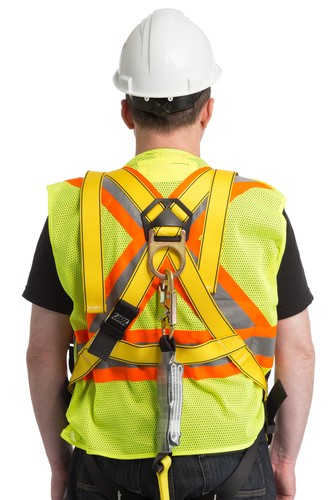
- Retractable lifelines must attach directly to the back D-ring or to a non-shock absorbing extension. If using a pouch style lanyard, make sure to attach the pouch end to the harnesses back D-ring.
- Never tie a lanyard back into itself unless it is specifically designed to do so.
- Always tie off as high as possible to reduce free fall distance.
- If tying off at your waist or lower, use a lanyard designed specifically for that application.
- Make sure that the connection is secure and properly closed.
Vertical Lifeline Recommendations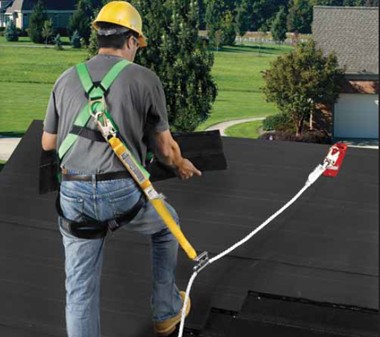
- Keep in mind that a vertical lifeline requires extra clearance.
- Always use a 3-foot lanyard.
- Ensure the rope grab is above the D-ring or within safe reach at all times and is adjusted as you move along the rope.
